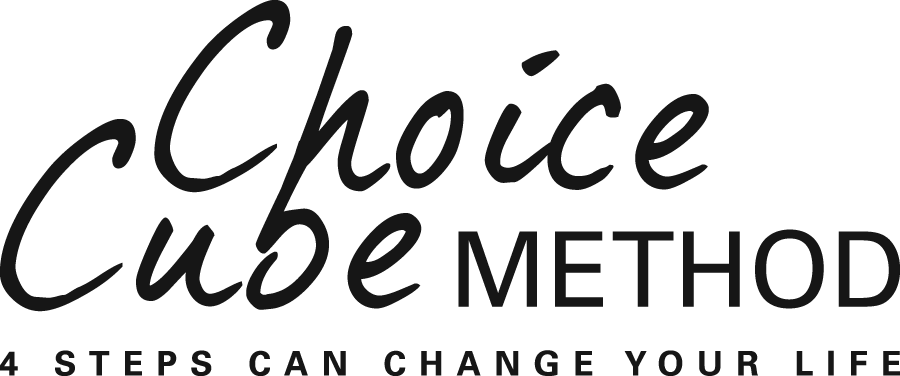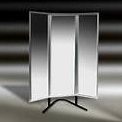Courtney, a lovely, blond thirty-something was frantic. Her ten-year-old son, Tim, was out of control and she simply did not know what to do about it. There were the daily calls from school about his grades and his acting out. He was disrespectful to her now in a way he had never been before. Courtney was scared. She didn’t know which way to turn.
out. He was disrespectful to her now in a way he had never been before. Courtney was scared. She didn’t know which way to turn.
Tim was her only child. His dad had deserted her and his son when the boy was five. Courtney had to raise him by herself with a little help from her family who live in a neighboring state. Courtney thought she had done a good job. But now…well, she wasn’t so certain.
A strange thing about Courtney, she believed in God for lots of things in her life. God always seemed to come through for her. But this time, for some reason, she was having difficulties believing God was in control of the situation and would help her.
The “meaning she attached” to this situation with Tim, to herself, and to God was oh, so negative and hopeless. The “story” she was telling herself was dangerous and destructive.
THE “STORY” - THE “MEANING ATTACHED” The meaning you attach to anything affects your:
- body (stress)
- emotions
- mind (thoughts-mental pictures)
- will/desires.
The first three are pretty straightforward. Will/desire is a little tricky.
Basically when you have difficulties with a person (including yourself), a thing, action, or problem you can will/desire only three things:
- to avoid
- to control
- to resolve difficulties in a win-win" fashion (everyone, including you, feels they got a fair deal.
It's only human to want to avoid or control things that are scary and hurtful. It only makes sense. But unless you deal with something honestly, it’s unlikely you will resolved it satisfactorily and permanently.
YOU CAN CHOOSE YOUR FOCUS: Now, here’s some good news. You have choice regarding the meaning you attach--the "story" you tell yourself.. You have choice because you can choose where you put your focus. Do you focus on your losses and difficulties? Or do you focus on your options, strengths, and possibilities?
COURTNEY’S NEGATIVE FOCUS: Courtney is focused on the negative side of reality Tim’s behavior, her fear, and her helplessness are overwhelming her. The answer to this negativity, however, is not to pump herself up and try to be positive. The answer to her situation is to see reality clearly—the big picture and to choose whether she wants to continue to focus on the negative side of reality or to shift her focus to the positive side of reality. If she continues to dwell on her fears and helplessness, there’s a good chance that her fears will come to pass. (If Courtney can’t make a choice, I’ll explain a way to get help.)
It’s a universal law, like gravity, that whatever you focus on will get you more of the same
Let’s imagine that Courtney just gives up and continues to focus on Tim and this difficult situation. She may ignore how stressed she feels and continue to stew around in fear, helplessness, hopelessness, and probably anger. She may try to get out of he negative mood or state of mind by calling a friend and complaining, eating, shopping, or sleeping more.
These behaviors may help her temporarily feel better, but none of these strategies gets to the root of the problem--the story she is telling himself. In fact, it’s likely they will make things worse.
COURTNEY’S POSITIVE FOCUS: In contrast, Courtney can admit that she and Tim are in a bad place. (What Courtney believes about this difficult situation is true.). She may realize that the negative side is only part of reality, only part of the big picture. The other side of reality is that she and Tim have strengths, options, and possibilities she can’t see now because she is so overwhelmed by the problem.
If Courtney wakes up and questions her story, she can start to make changes in herself and how she interacts with Tim. She needs to stand back and objectively look at what going on inside of her--become a “conscious observer” of her reactions.
She needs to stay aware of the inward reactions of her body, emotions, mind, and will so she can change them. This will give her immediate relief and she will stop doing the same old thing and do something different. Furthermore, as she repeatedly changes her inward reactions, the changes will last! Courtney will stop being her own worst enemy and begin to be her own best friend.
Tim, like all children, he needs three critical things from his parent(s), Courtney.
- 1. He needs to believe and feel (not simply be told, but feel) that she listens to him.
- 2. He needs to believe and feel that Courtney understands him and loves him.
- 3. He needs Courtney to help him make sense of everything that is happening.
WAKE UP TIME: So, Courtney needs to wake up to the “story“ she is telling herself and make some changes. But how? The way is always the same.
Though there are lots of ways to change, Courtney had learned about the Choice-Cube® Method from a friend and decided to use the method’s mental framework, simple tools, and 4 steps to help her manage her inward reactions. Remember, inward reactions are the reactions of your body (stress), negative emotions, the thoughts, pictures in your mind, and your desire/will.
Courtney understood that the fastest and most lasting way to change starts with changing her inward reactions. This is because whether you want to change behaviors or your beliefs, in the end your four inward reactions will have to change.
At first, Courtney may be uncomfortable, maybe even more sad, angry, and helpless. But she won’t be stuck!
DANGER AND HOPE: Let’s get clear. If Courtney continues to focus on Tim and her helplessness, fear, and anger, she will create situations that cause the very thing she fears to become more and more real. She will become increasingly stuck and unable to change. And the situation will continue to deteriorate.
In contrast, if she becomes a conscious observer and gets in touch with her stress, feelings, thoughts and desires, she can use the Choice-Cube tools to change them. She can get to the whole truth about the situation, including hers strengths, options and possibilities, and Tim’s also. Then she can focus on those, and create change in both of their lives.
A CRITICAL LIFE CHOICE: Courtney is at a critical choice point in her life and Tim’s life. Will she screw up his courage and do something to change herself so she can then address her son's issues? Will she go for short-term pain but long-term gain?
IF ARE YOU READY TO CHANGE: If you are at a choice-point like Courtney, are you ready to change and stop focusing on the problem? You can begin to turn your life around. First, admit that you have a problem. Second, look at the “meanings you attach” to the issue and third, repeatedly take the following 4 STEPS of the Choice-Cube Method.
If you don’t know what you are telling yourself—your story or the meanings you are attaching—these four steps will help you find that out.
Step 1: RECOGNIZE - Focus on your body and use the Choice-Cube tools to manage your stress.
Step 2: INTERRUPT/RELEASE - Label your emotions and use the Choice-Cube tools to let go of those emotions safely and appropriately. Your emotions lock in limited and distorted thinking. So, after you use the tools to release your emotions appropriately, you will see both the negative and positive sides of reality more clearly.
Step 3: REFOCUS - Look at both sides of reality. Imagine holding the negative reality in your left hand and the positive reality in your right hand. Now, seesaw between the two until you can choose which side you want to focus on, negative or positive. Remember, this is an important choice, because, whatever you choose will get you more of the same!
Step 4: REPLACE/ACT - Once you have managed your body (stress), your negative emotions, thoughts and pictures, you can choose what you want to do. Do you want to do something fresh and different and resolve the situation “win-win,” Or do you want to repeat the same old inward reactions trying to control or avoid the person, thing, action, or problem inappropriately. Be as specific and detailed as possible and use the Choice-Cube tools to help you make the changes you desire.
To help you get a handle on your inward reactions: body, emotions, mind, and will, you can take the Choice-Cube Assessment Questionnaire on my website. Click here /. To learn the Choice-Cube Tools or gain a deeper understanding of the method, check out my book, Become the Person You Were Meant to Be - The Choice-Cube Method. Click here http://amzn.to/Xw2YMZ.






